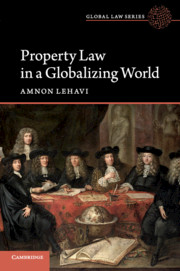Book contents
- Property Law in a Globalizing World
- Global Law Series
- Property Law in a Globalizing World
- Copyright page
- Contents
- Introduction
- 1 Why Property Law Needs Globalization Strategies
- 2 Local to Global
- 3 Land
- 4 Tangible Goods, Monetary Claims, and Investment Securities
- 5 Intellectual Property, Data, and Digital Assets
- 6 Security Interests and Proprietary Priorities in Insolvency
- Index
1 - Why Property Law Needs Globalization Strategies
Published online by Cambridge University Press: 04 January 2019
- Property Law in a Globalizing World
- Global Law Series
- Property Law in a Globalizing World
- Copyright page
- Contents
- Introduction
- 1 Why Property Law Needs Globalization Strategies
- 2 Local to Global
- 3 Land
- 4 Tangible Goods, Monetary Claims, and Investment Securities
- 5 Intellectual Property, Data, and Digital Assets
- 6 Security Interests and Proprietary Priorities in Insolvency
- Index
Summary
- Type
- Chapter
- Information
- Property Law in a Globalizing World , pp. 9 - 41Publisher: Cambridge University PressPrint publication year: 2019



